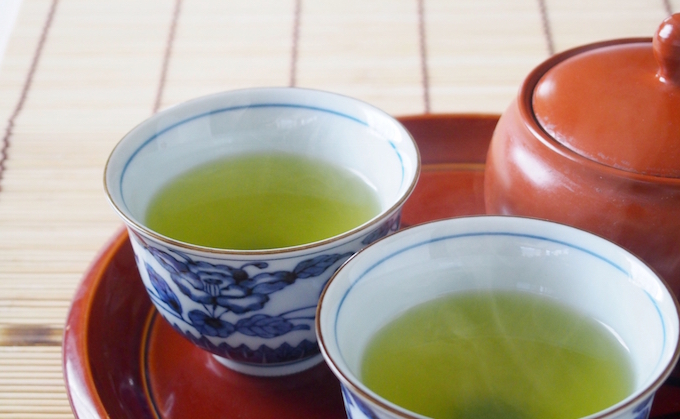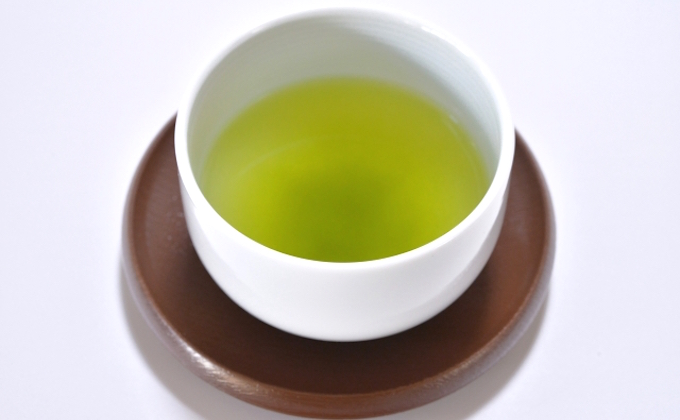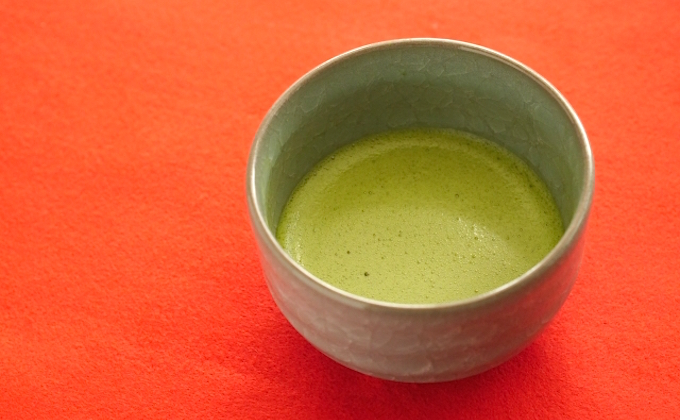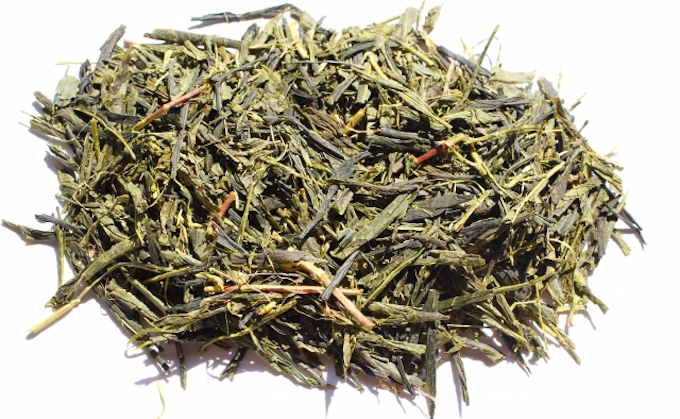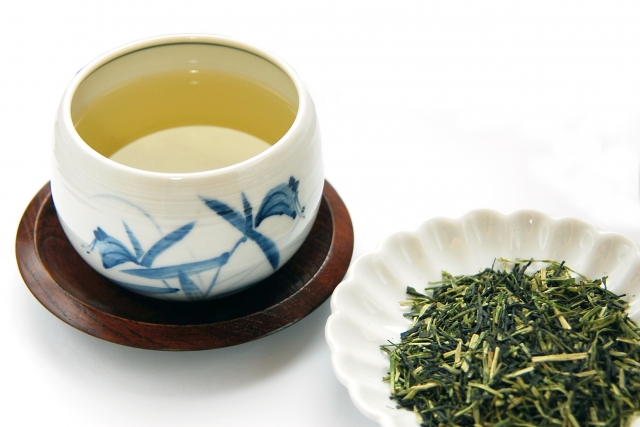TRG Info and Advice
Tea [Cha]
The History of Cha
The most widely accepted theory claims that tea originated from the mountainous areas between the Yunnan Province in China and Assam in India. The “Tea Road”, an ancient tea route, expanded all over the world from there.
A record from China shows that tea was already being consumed before the birth of Christ. It is not clear when tea was first introduced to Japan, but old records suggest that some kind of ceremony related to tea took place during the Nara Period (710-794). This is recognized as the earliest mention of tea in Japan.
It is widely known that the famous Japanese Buddhist monks, such as Saicho and Kukai, broughttea and tea-drinking manners to Japan from China around 805, in the Heian Period (794-1185). Tea at that time was called dancha, and was kept in the form of a block of tea leaves, which were shaved and infused. Dancha was brown in color, like oolong tea. It was consumed among monks and the nobility for medicinal or ceremonial purposes, but it did not spread to the common people. During the Tang Dynasty, the practice of sending envoys to China was terminated, and tea culture experienced a gradual decline.
Eisai, a Buddhist monk who came back to Japan from China during the Song Dynasty (1191), brought with him the production method of steamed tea leaves and matcha green tea, which were being produced in China at that time. Eisai introduced tea cultivation and drinking habits to Myoue Shonin, a Buddhist priest at Kozan-ji temple in Tsuganoo, Kyoto. Later, Eisai wrote a book entitled, Kissa Yojo-ki (The Book of Tea Regimens), which outlined the health benefits of green tea. Thus, tea gardens expanded from Kyoto to other parts of the country, and the practice of drinking matcha gradually spread throughout Japan.
In the Muromachi Period (mid-15th Century), immigrants from China who came to Kyushu, and who introduced ceramics to Japan, brought kamairi-cha (pan-fired green tea) for themselves to drink. This was the starting point of kamairi-cha, a tea that is produced to this day in Kyushu.
In the Azuchi Momoyama Period (1573-1603), Sen no Rikyu brought tea ceremony to perfection. He incorporated the ideas of Zen and introduced wabicha, which is tea ceremony with an emphasis on simplicity. Wabicha was widely accepted among the samurai warrior class, and tea ceremony culture flourished.
On the other hand, the habit of drinking infused tea, which originated with dancha in the early Heian Period, continued, and eventually led to the emergence of sencha. In the early Edo Period (1603-1867), Zen Monk Ingen (from China) introduced a way of drinking kamairicha by adding hot water to the tea leaves. Japanese tea pots began being produced then, and tea drinking habits spread alongside the food culture of common people.
In the late 18th Century, Soen Nagatani in Kyoto invented mushisei-sencha, or steamed green tea. This is a very unique tea, worldwide, made by stopping the fermentation process through the use of steam. This new tea, green in color, with a sweetness and rich aroma which did not exist before, gained popularity. Mushisei-sencha is now the mainstream Japanese tea of today.
What is cha?
Green tea is a drink that is easily partaken of, like coffee or tea with a meal, or in order to unwind. It is usually divided into three types: green tea, black tea and oolong tea. These varieties of tea are, actually, all made from the same tree, which originates from the perennial evergreen tree of the Camellia genus, Theaceae family, scientific name: Camellia sinensis. The same tea leaves are divided into three categories, depending on the degree of fermentation: green tea (non-fermented), oolong tea (half-fermented) and black tea (fermented).
The non-fermented tea, like Japanese tea with its vivid green color, was developed by technologies unique to Japan, and is produced only in Japan. Chinese tea and black tea are brewed with boiled water, but Japanese tea is so delicate that the temperature of the hot water used to infuse varies according to the variety of tea, in order to highlight its flavor.
The wide variety, the different ways of drinking it, and the rich aromas and flavors, make Japanese tea a distinguished one throughout the world. Japanese tea is both a drink, and a tradition, in which Japanese people take pride.
Tea Varieties
Sencha (Green tea)
To make sencha, freshly picked tea leaves are heated either by steaming or pan-firing, so that fermentation is stopped. Sencha represents 80 per cent of the entire tea production in Japan. It is the most consumed variety within the green tea category, and considered a typical Japanese tea. The color of sencha is a transparent yellow-green, and it has a refreshing aroma and well-balanced flavor. Higher grades of tea, of course, have more sophisticated flavors and aromas.
Matcha (powdered green tea)
Matcha is closely associated with cha no yu (tea ceremony). Matcha is tea powder made by stone-grinding tencha. Drinking matcha enables you to take in all the nutrients contained in tea leaves. When used for tea ceremony, matcha is divided into two categories: koicha (thick tea) and usucha (thin tea), and each kind of tea is prepared with its own methods and manners. It is used not only as a drink, but also for making desserts or other dishes.
Bancha
Bancha is tea used daily and can be found in most households. The production methods are the same as sencha, but bancha teas vary, depending on the harvest season, quality, production areas, etc. Bancha has a refreshing and mild taste with little bitterness. The color is pale and highly transparent, so it is widely used as an ingredient of tea sold in plastic bottles.
Hojicha (roasted green tea)
Sencha and bancha are roasted over strong heat until browned and made savory. The term hoji refers to the act of roasting. By roasting tea leaves, caffeine is sublimed, and the resulting tea will have a light, savory and refreshing taste. Hoji-cha is not considered top-grade among Japanese teas, but it is often served during meals at high-end Japanese restaurants.
Kukicha (twig tea)
Kukicha is tea made of the stems of sprouts, sorted by a sorting machine at the finishing stage of the gyokuro or sencha production process. Kukicha features a distinctively refreshing aroma and sweetness. Among the twigs, stems of gyokuro or top-grade sencha (called “karigane”) can be found and are highly valued.
Fukamushi Sencha (slow-steamed green tea)
Tea leaves for fukamushi sencha are steamed twice as long as ordinary sencha. Steamed for a longer time, tea leaves become tinier and are brewed in a shorter period of time. The color of fukamushi tea is dark green. It has neither a grassy flavor nor any bitterness. Instead, the flavor is rich and mild.
Yanagi (willow)
Yanagi is a bunch of tea leaves, sorted during the sencha production process, which are two-to-four-fold and shaped like willow leaves. The shape of the leaves resembles those of a willow, so they are called “kawayanagi” (river willows), too. Yanagi has a lighter and simpler taste than sencha. Many people choose to drink yanagi after meals, or at any of point of the day. Since yanagi tea leaves are large, larger tea pots and tea cups are used for yanagi than for sencha.
Gyokuro
By cultivating sprouts in the shade, the leaves gain a savory flavor with less bitterness. When infused in lukewarm water, the sweetish mild taste and flavor unique to gyokuro are highlighted. There is also a type of gyokuro called “netto gyokuro” (boiled gyokuro) for infusion in boiling hot water.
Tencha
Tencha is mainly used to make matcha. Like gyokuro, the tea plants are covered with reed screens or straws (shade-cultivation). The only ingredient is raw tea leaves, called ichibancha (first-picked tea), which are cultivated without being exposed to direct sunlight. Unlike ordinary green tea, however, the leaves are not rolled by hand and dried. The “ten” of the name refers to a stone mill, and tencha is called so because dried tea leaves are ground using stone mills. The stone-ground tea leaves are then shipped out as matcha.
Tama Ryokucha
The production process is the same as sencha until the halfway mark. From there, tama ryokucha is formed into coiled balls, because it is drum-dried and not twisted. It is also called “mushiguri” or “guri-cha.” It contains little bitterness and features a mild, rich flavor. Tama ryokucha is mainly produced in the northern and middle parts of the Kyushu Region, with the most famous production area in Ureshino, Saga.
Genmai-cha (brown rice tea)
Genmai-cha is made by blending yanagi or hoji-cha, produced in the same way as sencha, with roasted brown rice and rice popcorn made without oil. Genmai-cha features the flavor of green tea, plus the savory aroma of roasted rice, and has a refreshing taste. Because it is blended with brown rice, the amount of sencha and bancha is comparatively less in genmai-cha, so it contains little caffeine.
Mecha (sprout tea)
Mecha is tea made of thin tips of sprouts picked in the finishing stage of the gyokuro or sencha production process. Mecha is selected from the ichibancha or nibancha (first or second leaves), which become high-grade teas, so it is rich in flavor. Mecha is in ball-like shapes, and when infused, it produces a strong tea taste.
Konacha
Konacha consists of tiny bits of tea leaves leftover during the finishing stage of the gyokuro or sencha production process. These specks remain in the infused tea, so insoluble nutrients are effectively taken in. Both sprouts and cores are sometimes mixed in, so it can be unexpectedly delicious at times. Konacha is a vivid green color, and has a strong flavor. The “agari” teas served at sushi restaurants are usually konacha.
Kamairicha (pan-fired tea)
Unlike steamed sencha, kamairicha is produced by roasting fresh tea leaves in hot iron pans. The grass flavor evaporates, but the resulting tea has a distinctive fragrance called “kamako” (pan aroma). Kamairicha is made in the traditional method, even today, as it was introduced from the continent a long time ago. Kamairicha is mainly made in Ureshino (Ureshino, Saga) and Aoyagi (mountainous regions in Kumamoto and Miyazaki). Kamairicha is increasingly becoming rare, however, because fewer people make the tea. Kamairicha has a unique, savory flavor and a refreshing taste.






